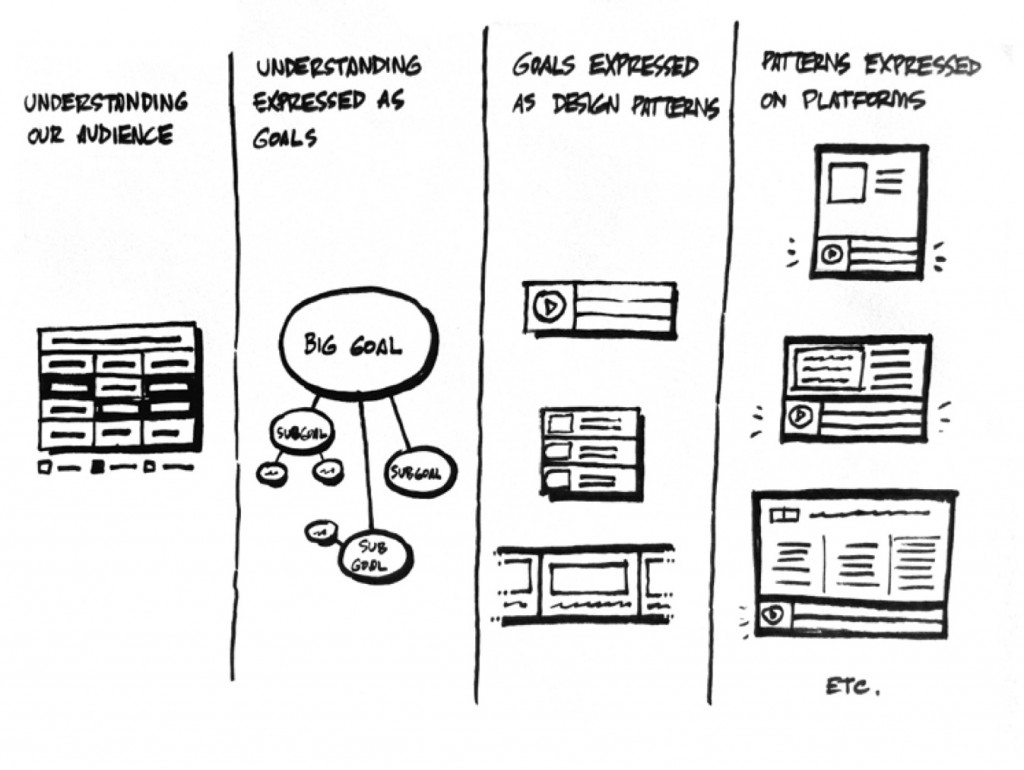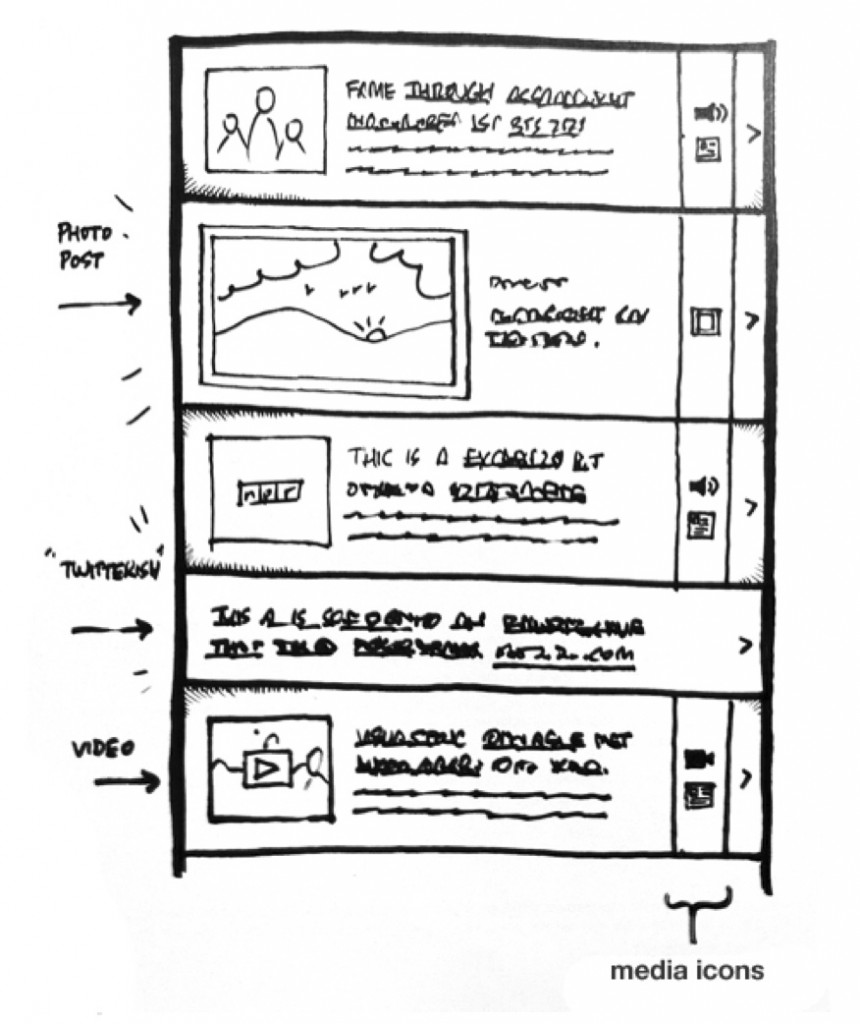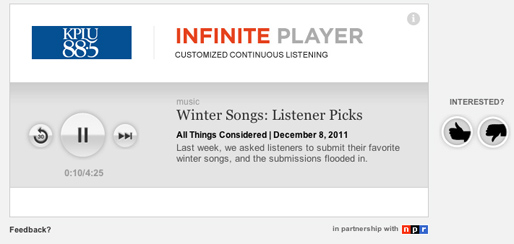Correction: This post originally referred to the player as the “Infinity Player” — the error has been corrected.
Great doesn’t always have to be complicated. Recently, NPR’s digital team caused major buzz with the release of its Infinite Player on Nov. 14. The quick little web-based application geared toward distracted listening combined the best of Pandora and old-school radio by creating a smart-streaming experience that personalized news, without creating an echo chamber.
ONA took a few minutes to talk to Michael Yoch, Director, Product for NPR, to figure out the genesis for the player, project inspirations and creating small concept-focused products in a major organization.
The Overarching Project
The overarching project we called “ubiquity”. Simply put, the idea was to identify the key components of a great NPR and NPR station experience on digital with an eye towards finding the critical things we should try to deliver across on all platforms. This could include things like station streams, access to programs, etc. But it also was an effort to think about simplifying presentation and navigation down to essential, common, familiar elements. To do this, we worked on distilling certain design patterns that translated audience goals into elements that could be repeated — and translated as necessary — across platforms (see above graphic).
The A-ha Moment
The player grew naturally out of an exploration of “lists” generally. We were exploring variations of the river of news idea, focusing particularly on how to present news that might consist of non-standard elements. For example, the important “story” of the moment might be a simple picture, or a video clip, or a piece of audio. It might not necessarily be what we think of as a full-on news story with text, audio, images / gallery, etc.
We were simultaneously thinking a lot about NPR’s strength as an audio company, and about simplifying playlists — or creating even more simplified listening experiences that go back to the central features of radio: you click and it plays something for you. While this is exactly the experience you get when you listen to a station stream, it’s different in many ways from the models NPR and many stations have explored online. Those include either a playlist (users finds things individually and adds them to a playlist to hear all at once then or later) or finding and listening to pieces of audio individually.
From these two directions we ultimately developed a hypothesis we believed might help us and our stations engage even more deeply with our audio listening online:
We should strive to engage our audience with immediate access to a continuous, relevant content experiences presented at the right time and place.
The Inspiration
That hypothesis summarized lots of key things we were dealing with in the larger project and got us thinking about continuous listening. We wanted to build something concrete to begin testing out these theories we were cooking up and everyone on the team immediately gravitated towards the idea of taking a crack at a continuous audio player. We had no idea what would be involved with doing algorithm-based recommendations but we wanted to be sure to capture the “relevant” part of the hypothesis and had been looking at a lot of recommendation-based products as part of ubiquity, including news products like Flipboard and Zite, music ones (Pandora and others), and movie ones (Netflix). Then Javaun Moradi, now our API product owner but then our SEO, search and viral distribution guru, just jumped in and spent a bunch of time researching algorithms. Once we had a sense we could actually handle that part of it, the team rallied to build it.
The Project Process
Since it grew organically, there really wasn’t a mandated timeline (also since it was essentially part of another project). We’re an Agile shop, so we use sprint cycles which are 2 weeks long for us (ie. you must develop finished work every 2 weeks). We got a working version of the player — very close to what’s live now up and running — in that time (in full disclosure we have gone back and tested a few things on the player and developed some additional ideas we haven’t had time to build).
The key thing we were trying to do in addition to creating an simple and attractive interface was to get the recommendation engine as good as we could in a short time. We followed a very helpful analogy developed by the head of our mobile team, Demian Perry, which equated what we were trying to do with story selection to the art of giving a gift. The simple rules were:
Don’t give me the same thing twice. Don’t give me something that is past its expiration date. Either pick something special for me, or give me something everyone needs. Surprise me.
The Completed Project
It’s been way more successful than we had anticipated. Though it doesn’t have a huge user base since it’s an experiment / beta in the “sandbox” part of our site, users’ responses have been extremely positive. We wanted to use this as a proof of concept that this direction is worth exploring further and we have absolutely done that.



